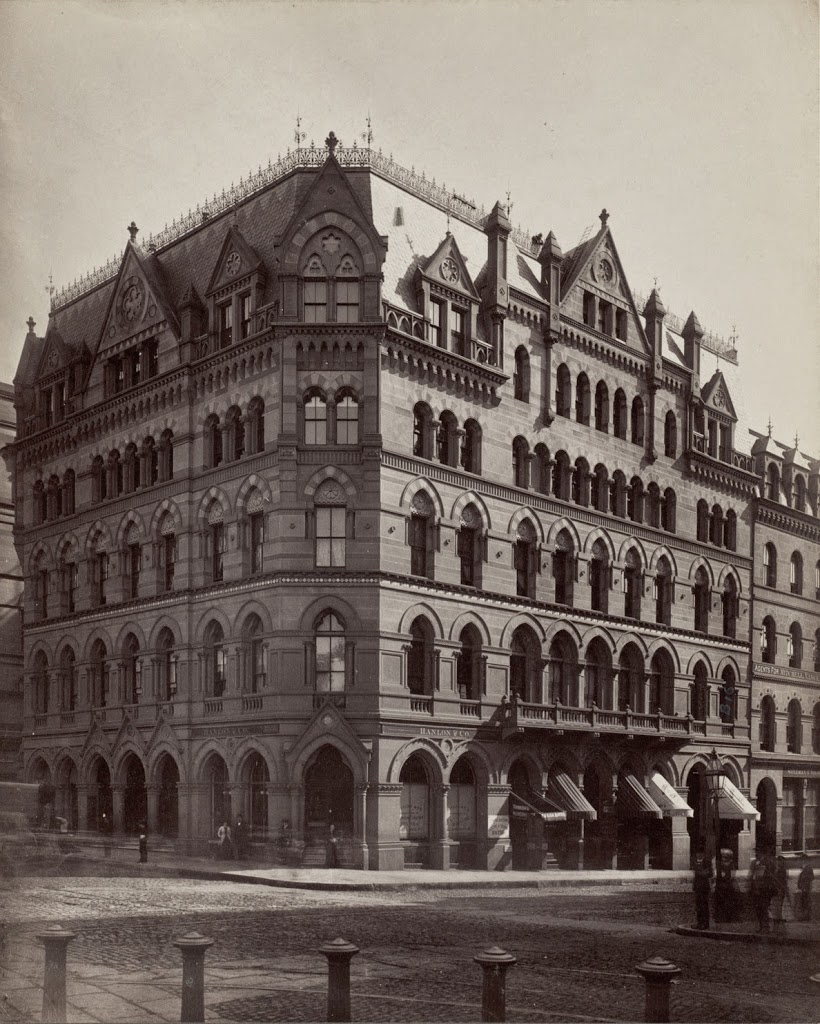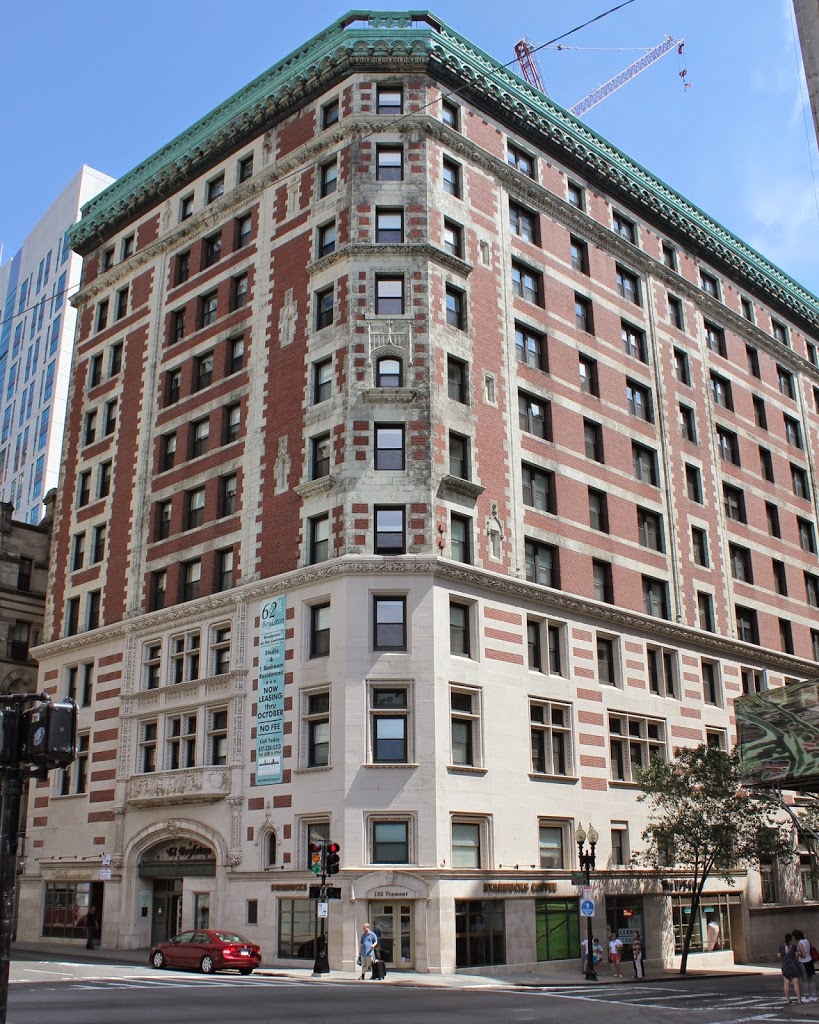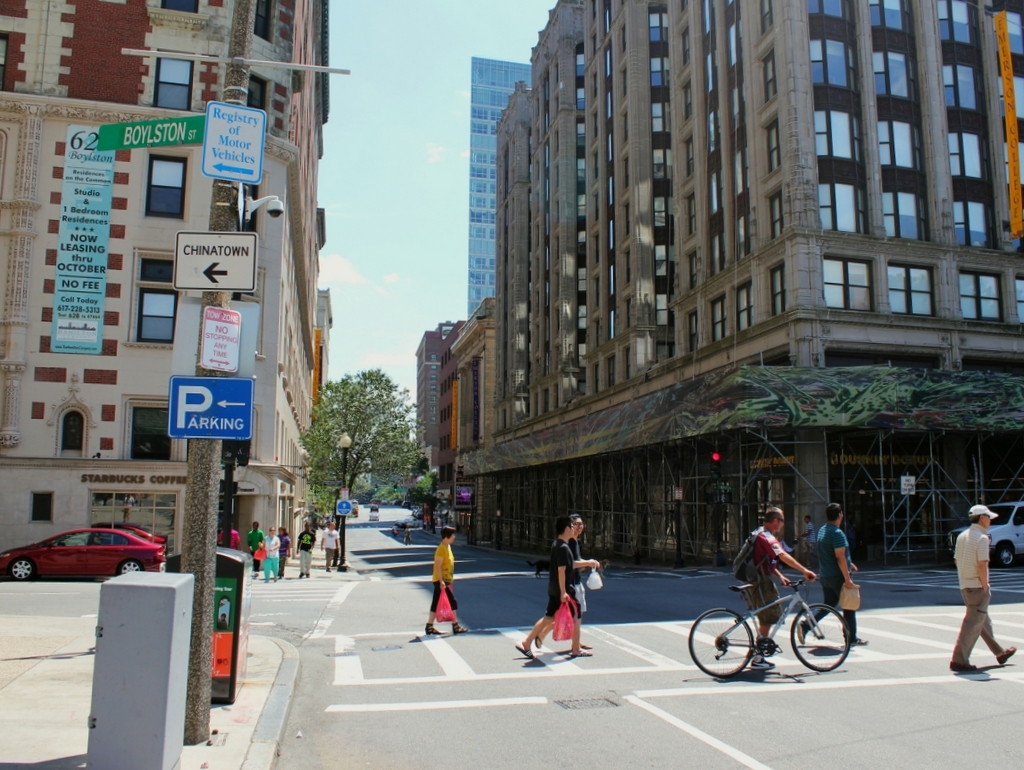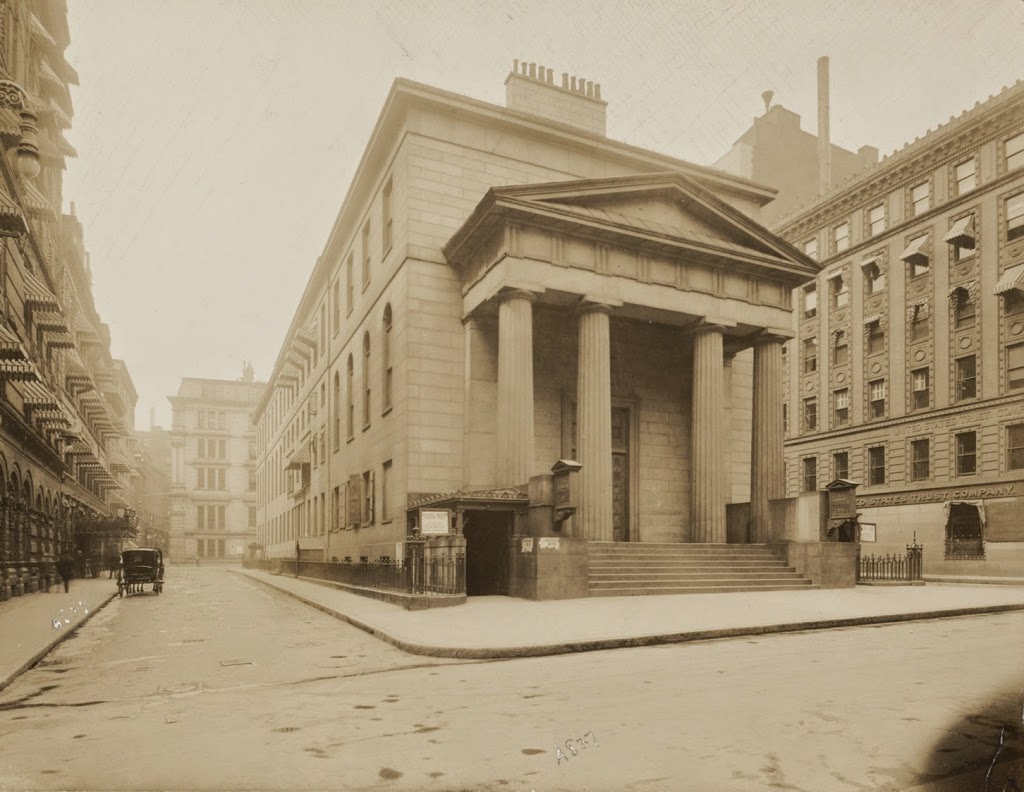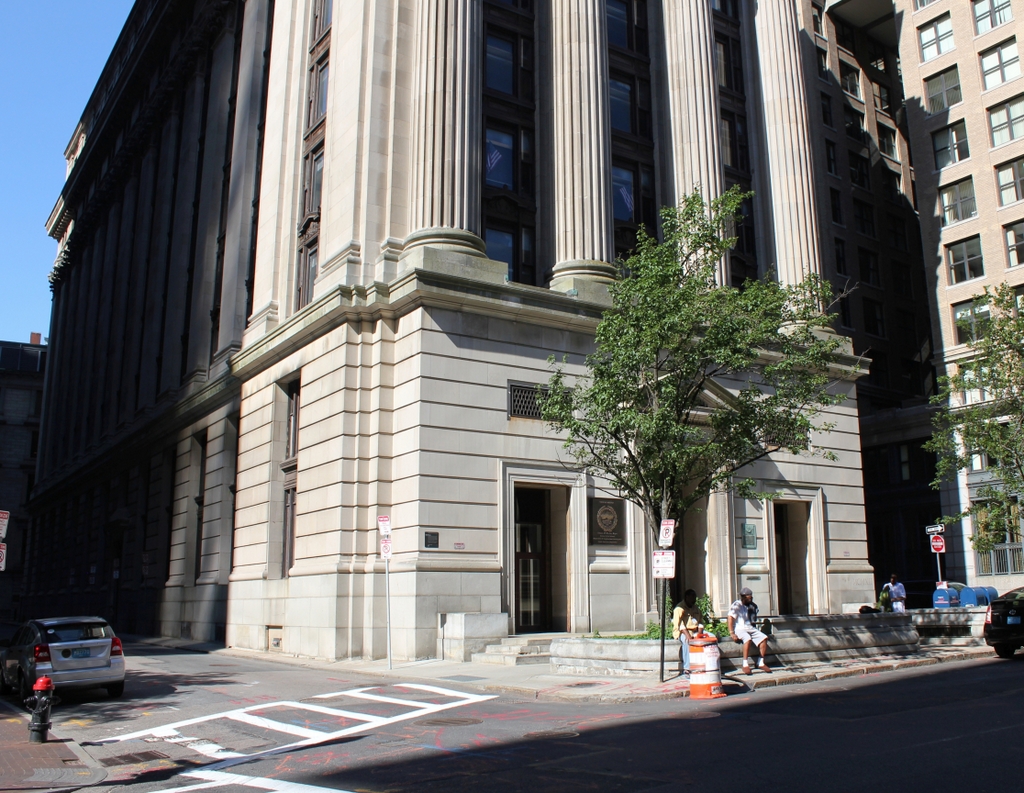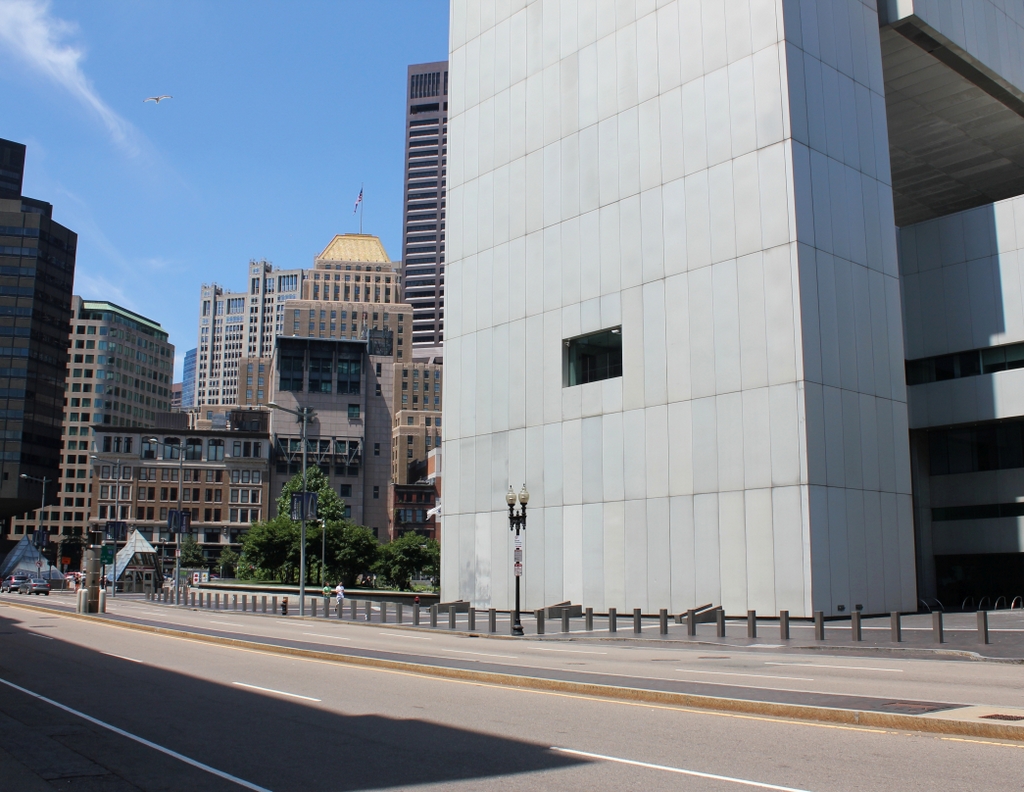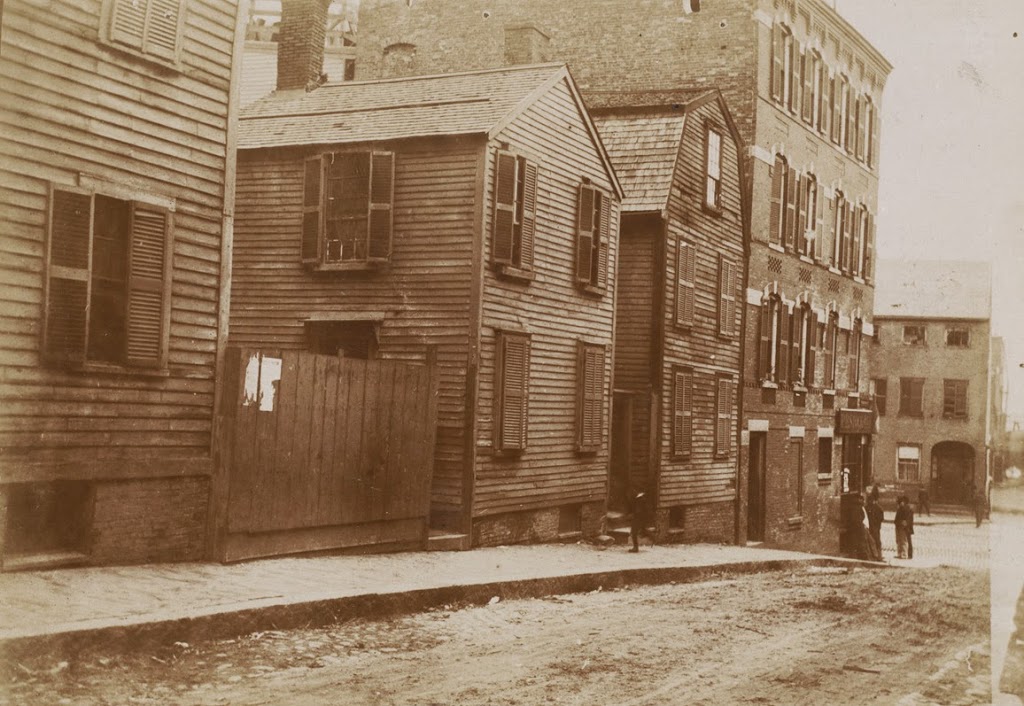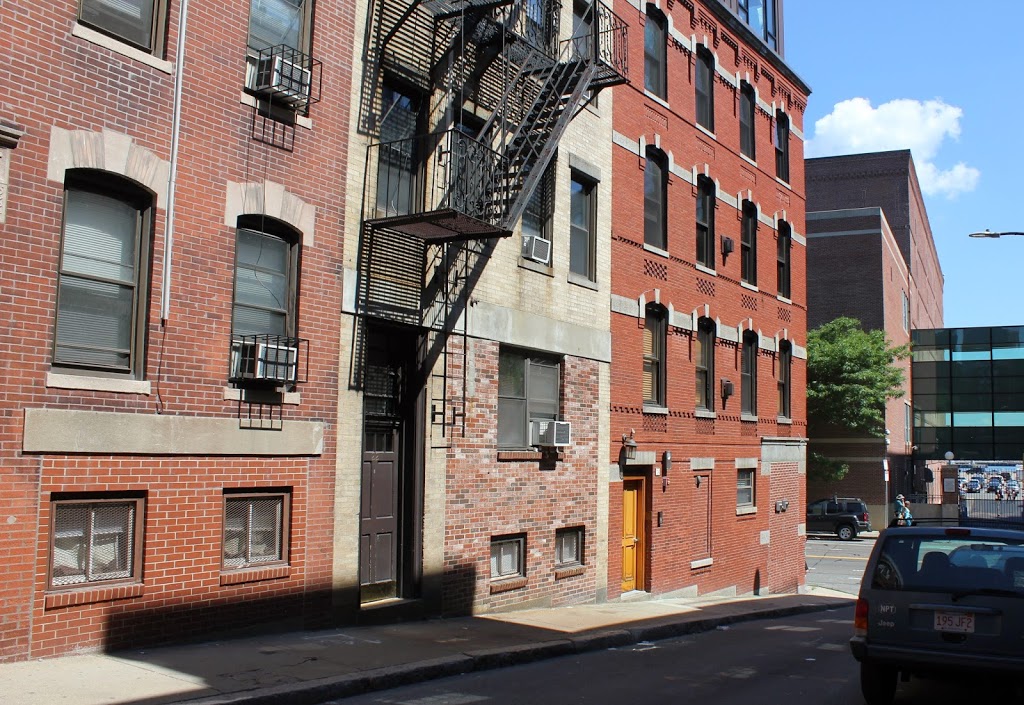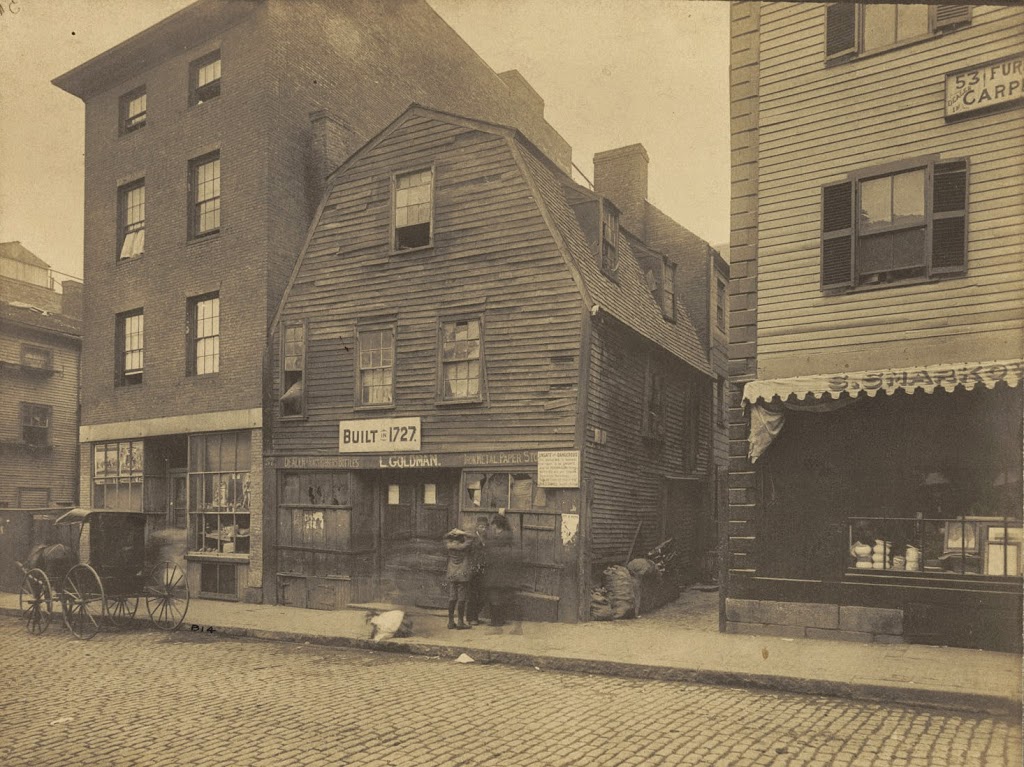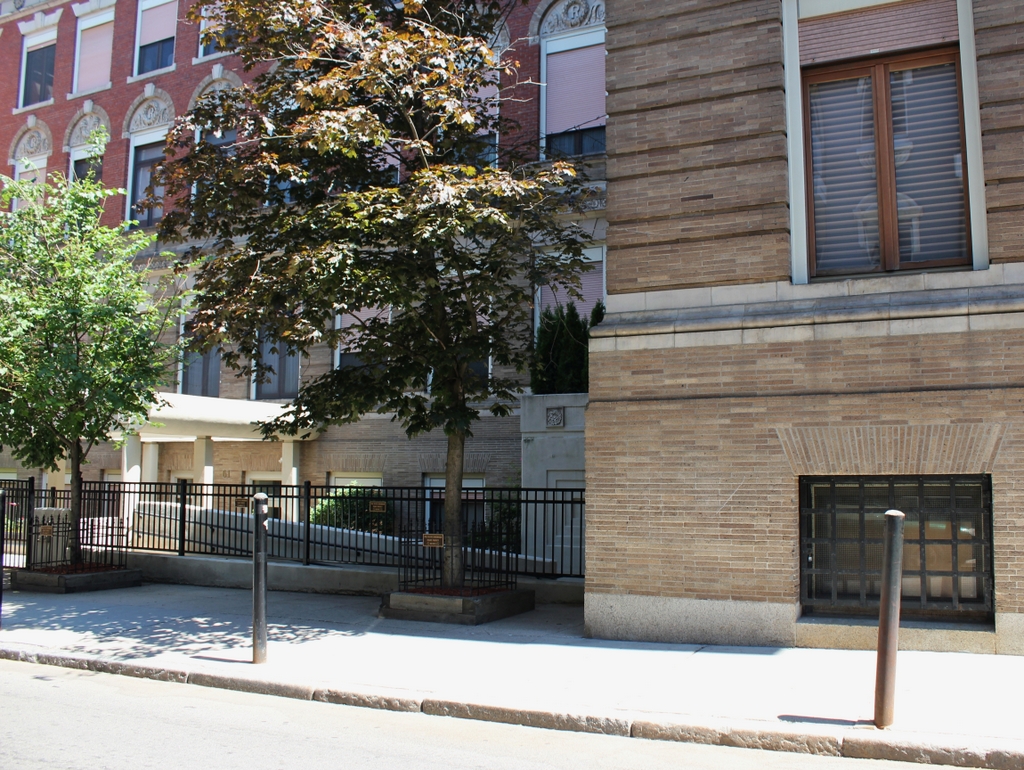The Hotel Boylston, at the southeast corner of Tremont and Boylston Streets in Boston, sometime in the 1870s. Photo courtesy of Boston Public Library.
The scene today:
Like the Hotel Pelham right across Tremont Street, the Hotel Boylston was built as a residential building, with the term “hotel” at the time referring to what we would today call an apartment building. It was at a prominent location, at the corner of Boylston and Tremont Streets, at the southeast corner of Boston Common. However, it was demolished in the 1890s and replaced with the Hotel Touraine building, which still stands today.

